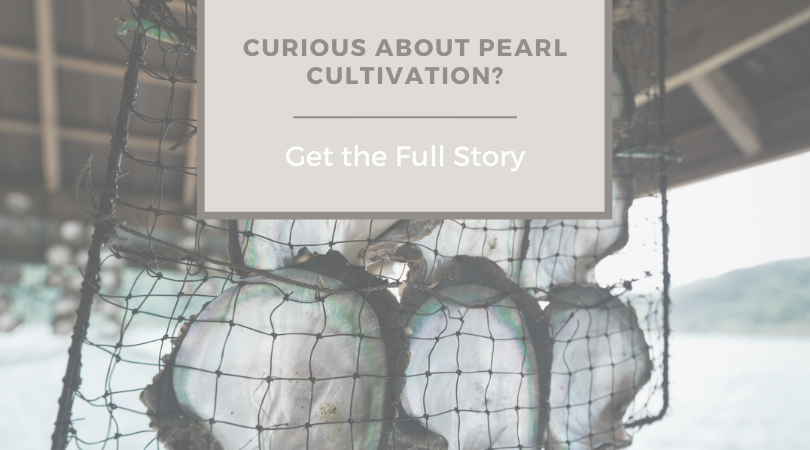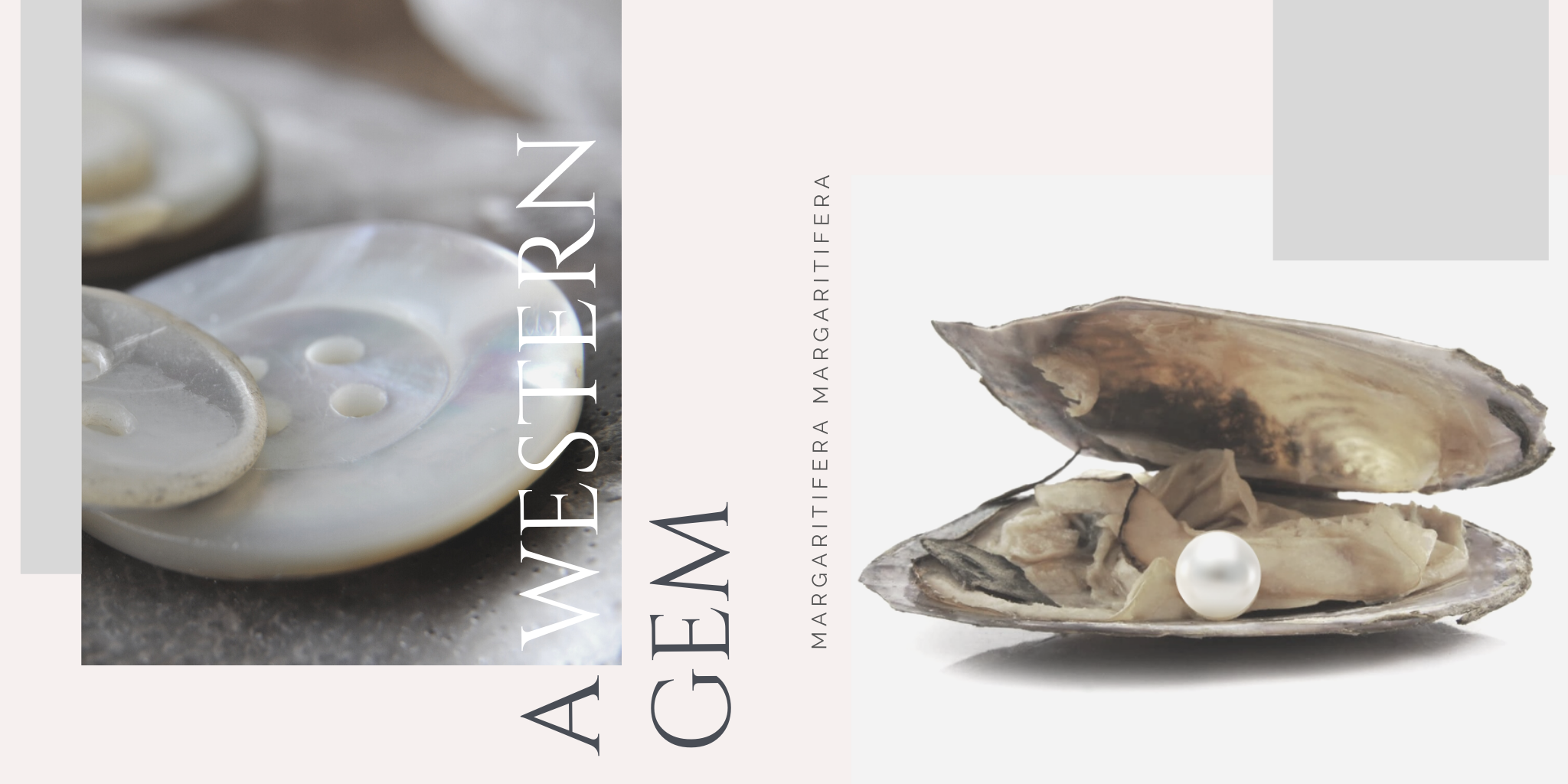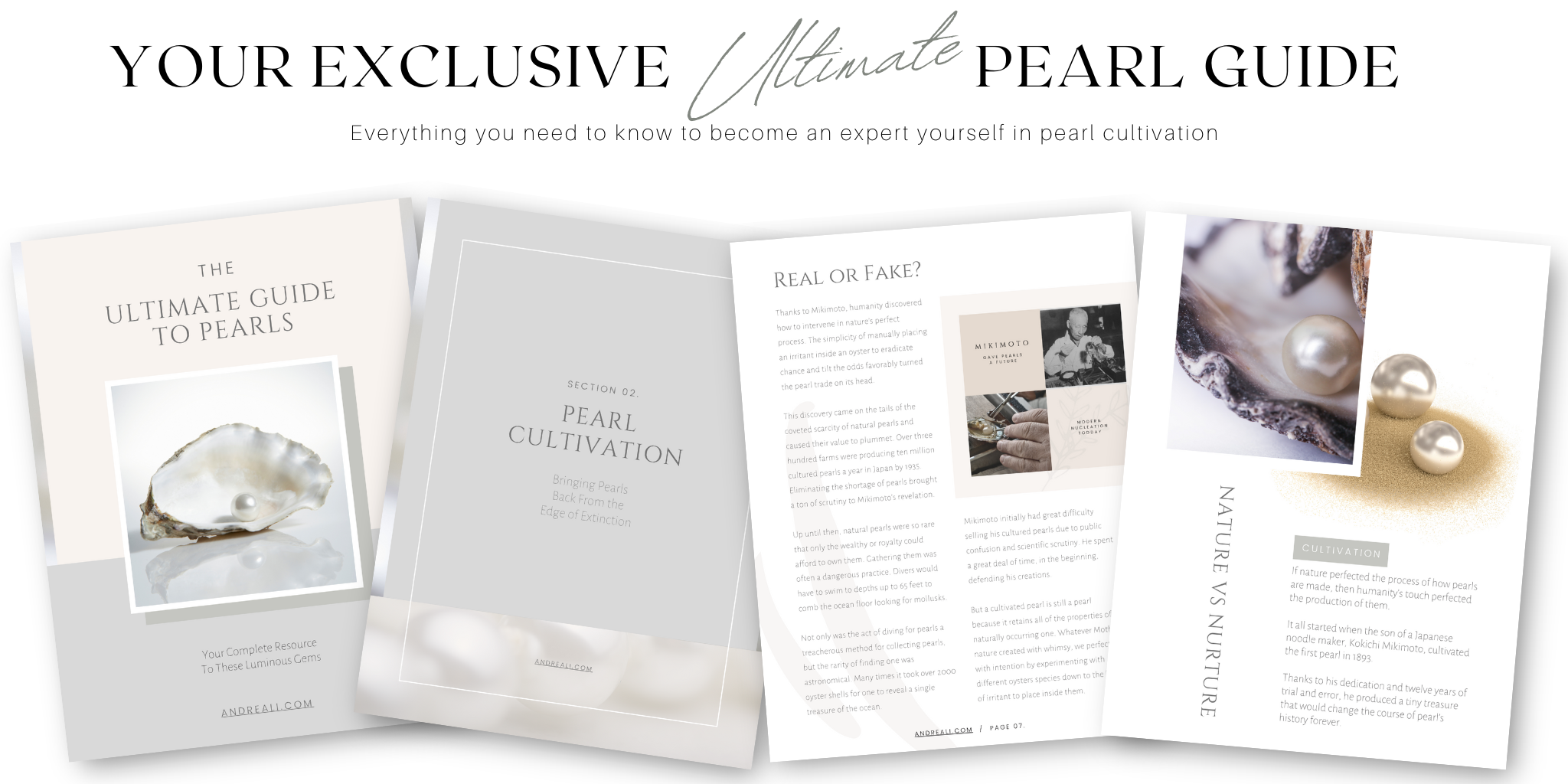Cultivation and How It Saved Pearls
Today’s global pearl jewelry market size is expected to reach 20 billion by 2025. Not bad for an ancient gem that was discovered before recorded history. The extensive history of a pearl’s value is like that of an ocean tempest that Poseidon himself could barely wield.
Much of the controversy that has influenced pearl’s volatile market is the introduction of cultivation. But that’s not the only contribution that cultivation has provided. Pearl’s would be long extinct by now, with only its mythology left behind in stories.
Imagine Audrey Hepburn in Breakfast at Tiffany’s without her iconic strands of pearls. Thankfully you can enjoy these tiny treasures for generations to come. In this post, you will learn -
How a pearl is formed and how it is cultivated
The beginnings of pearl cultivation
Who is responsible for pearl cultivation
Western contributions to pearl cultivation
The differences between natural and cultivated pearls
Nature vs. Nurture
If nature perfected the process of how pearls are made, then humanity’s touch perfected the production of them. It all started when the son of a Japanese noodle maker, Kokichi Mikimoto, cultivated the first pearl in 1893. Thanks to his dedication and twelve years of trial and error, he produced a tiny treasure that would change the course of pearl’s history forever.
How a Pearl Is Formed
But first, let’s look at how nature forms pearls to give a little context to the process of cultivation. The most significant distinction that separates pearls from gemstones is their organic origins. Unlike their sedimentary cousins that need to be cut and polished to bring out their beauty, these small miracles emerge with their beauty fully formed.
Pearls result from an oyster’s natural ability to protect itself from irritants that breach its outer shell. This defensive system works similar to the way a callous would form on your body. It does this by secreting a silky, crystalline substance called ‘nacre’ around the irritant, creating a protective layer
The longer the irritant stays inside the oyster, the more layers of nacre it will produce and the larger the pearl will become. The properties of nacre are what give a pearl its unique luminosity. Perfectly aligned microscopic crystals of calcium carbonate pass light that produces the rainbow iridescence along the pearl’s surface.
How a Pearl Is Cultivated
By now, it shouldn’t be an enormous leap of logic to understand how humanity discovered how to intervene in nature’s perfect process. The simplicity of manually placing an irritant inside an oyster to eradicate chance and tilt the odds favorably turned the pearl trade on its head.
This discovery came on the tails of the coveted scarcity of natural pearls and caused their value to plummet. Over three hundred farms were producing ten million cultured pearls a year in Japan by 1935. Eliminating the shortage of pearls brought a ton of scrutiny to Mikimoto’s revelation.
But a cultivated pearl is still a pearl because it retains all of the properties of a naturally occurring one. You can replicate nature’s process, but you can’t trick it into being something it’s not. Natural pearls, not surprisingly, have a more organic-looking shape. Whatever Mother nature created with whimsy, we perfected with intention by experimenting with different oysters species down to the kind of irritant to place inside them.
Below is a chart of the different kinds of pearls that make up the world’s pearl industry today.
Modern Cultivation of Pearls
Modern cultivation is a product of a highly researched selection of the best strains of pearl-producing oysters. Additionally, the sea beds’ temperatures, feeding conditions, and nutrients are scientifically dialed by hundreds of years of data.
Regardless of such careful measures, oyster farms are often at the whims of Mother Nature which can greatly affect the pearls produced. Underwater hatcheries are subject to unpredictable weather conditions. Some of these can bring in heavy rains to the bays where the oysters are suspended, reducing the water’s salinity and killing entire crops. Other organisms that share occupancy in the ocean can also be dangerous, such as various phytoplankton species whose explosive growth can create the ‘red tide,’ which depletes the water’s oxygen, suffocating the oysters.
But perhaps the most notable factor of all in creating the most superior pearls is the oysters' nucleation.
The perfection of nucleating oysters impacts the quality of cultivated pearls in the most significant way. The introduction of this process began with two notable names that Mikimoto himself later eclipsed. But their efforts have not been forgotten because their contributions remain at the heart of cultivation today.
The Era of Modern Cultivation Begins
Can you guess what a government biologist and carpenter have in common? They both independently and simultaneously discovered a scientifically predictable procedure of pearl culturing using a grafting needle.
Government biologist Tokichi Nishikawa and carpenter Tatsuhei Mise observed that by surgically inserting a piece of mantel tissue from another oyster along with an irritant such as a piece of shell into a living oyster, it would form a pearl sac. The sac would then begin to produce nacre, resulting in a pearl. Up until now, Mikimoto was merely inserting an irritant to coax an oyster to produce a pearl.
Mise’s patent in 1907 for his grafting needle was made obtuse by Mikimoto, who altered his own patent with a similar technique to make round pearls as the differentiator. Mikimoto may be the Godfather of cultivating pearls, but Mise and Nishikawa deserve their much-deserved place in history as essential contributors to an industry worth billions of dollars today.
Western Contribution to Pearls
Much of pearl’s history has its origins in the Old World, but the Western contribution is equally significant. Expansion into new territories led to discoveries of untapped resources. One of them being - you guessed it, an abundance of freshwater pearls in the Ohio, Mississippi, and Tennessee River basins.
This valuable unearthing was immediately primed to fill the insatiable demand for pearls in Western Europe and introduced a burgeoning export industry. The sheer volume of pearls that were traded put the New World on the map, and the region became known as the ‘Land of Pearls.’
This new resource provided the highest quality of freshwater pearls ever discovered. Many went on to be included in Royal Collections and later mistaken for being a saltwater variety. But perhaps the most notable addition to pearl’s incredible history is the type of freshwater mussel that produced these New World beauties - the Margaritifera margaritifera .
This particular mussel species has an unusually thick layer of nacre inside its shell called mother of pearl. This characteristic popularized another pearl-related trade industry of exporting mother of pearl buttons. But even more significant than that is the discovery of its shell to nucleate an oyster to produce the highest quality pearls.
To this day, U.S. mussels are the foundation of virtually all cultured saltwater pearls. It’s strange to think that almost all pearls used in jewelry today had their origins in the West regardless of being cultivated in the East.
Conclusion
The contributions of both the east and west bring pearl’s history full circle. Although these lustrous spheres may seem widely available, it’s important to note that they can’t be mass-produced because it requires a living organism to produce them.
Out of the millions of pearls that are nucleated every year, only a small percentage actually produce high-quality pearls. Fifty percent of them will survive, while only twenty percent of those will create gems that meet the market standards. Creating a sixteen-inch pearl necklace requires over 10,000 pearls to select from to find well-matched pearls.
Thanks to Mikimoto, Mise, and Nishikawa, our enjoyment of pearls continues to be accessible today instead of merely reading about them in history books. The days of finding naturally occurring saltwater pearls may be long gone, but the unpredictability of Mother Nature and humanity’s contribution to ocean pollution continue to impact scarcity and price.
While cultivation makes it possible for pearls to be available, many other contributing factors still make these ocean treasures, well, precisely that. Quality cultured pearls will always retain their value as a resource due to their timeless desirability.









